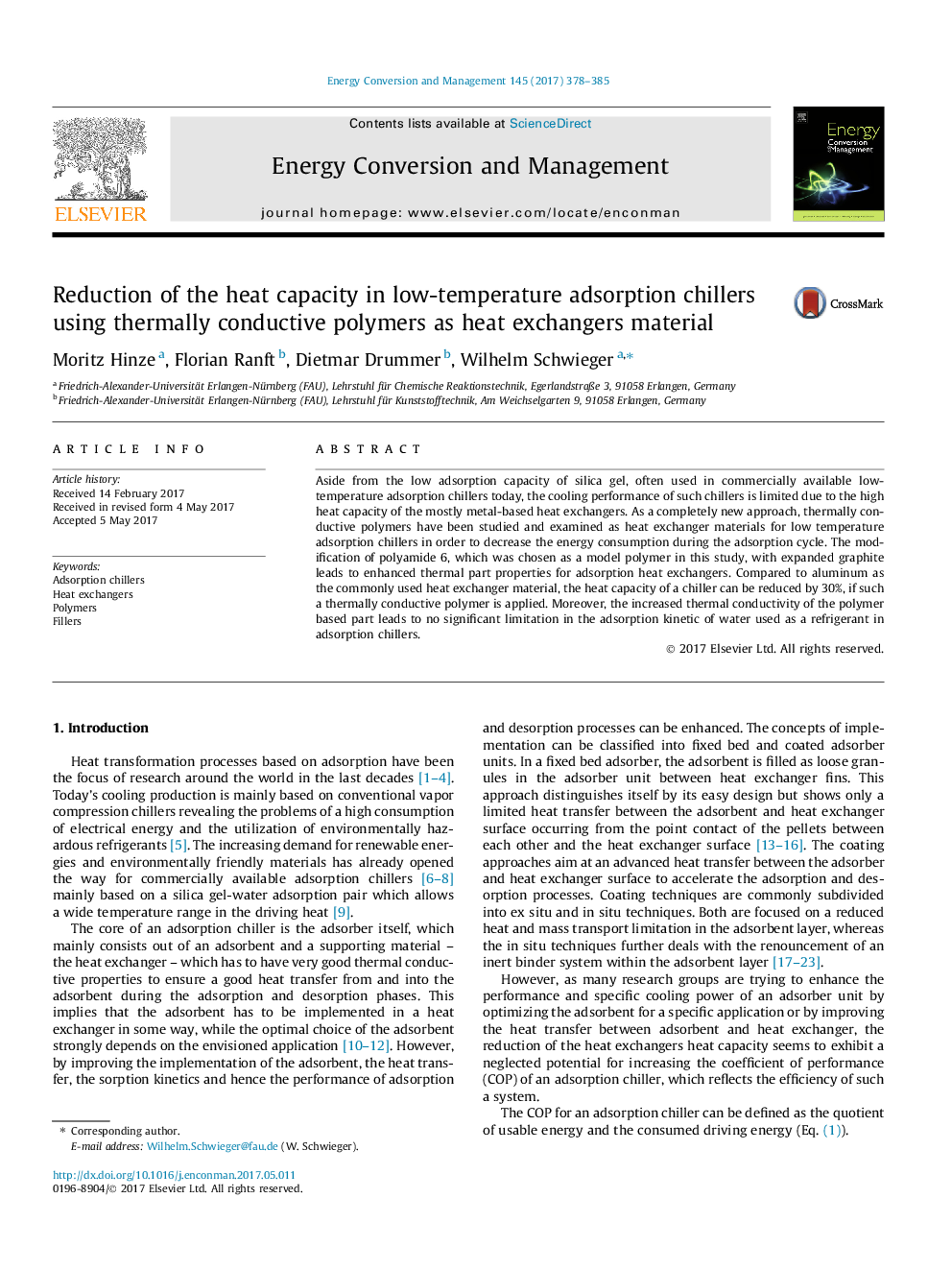| Article ID | Journal | Published Year | Pages | File Type |
|---|---|---|---|---|
| 5012744 | Energy Conversion and Management | 2017 | 8 Pages |
Abstract
Aside from the low adsorption capacity of silica gel, often used in commercially available low-temperature adsorption chillers today, the cooling performance of such chillers is limited due to the high heat capacity of the mostly metal-based heat exchangers. As a completely new approach, thermally conductive polymers have been studied and examined as heat exchanger materials for low temperature adsorption chillers in order to decrease the energy consumption during the adsorption cycle. The modification of polyamide 6, which was chosen as a model polymer in this study, with expanded graphite leads to enhanced thermal part properties for adsorption heat exchangers. Compared to aluminum as the commonly used heat exchanger material, the heat capacity of a chiller can be reduced by 30%, if such a thermally conductive polymer is applied. Moreover, the increased thermal conductivity of the polymer based part leads to no significant limitation in the adsorption kinetic of water used as a refrigerant in adsorption chillers.
Related Topics
Physical Sciences and Engineering
Energy
Energy (General)
Authors
Moritz Hinze, Florian Ranft, Dietmar Drummer, Wilhelm Schwieger,
